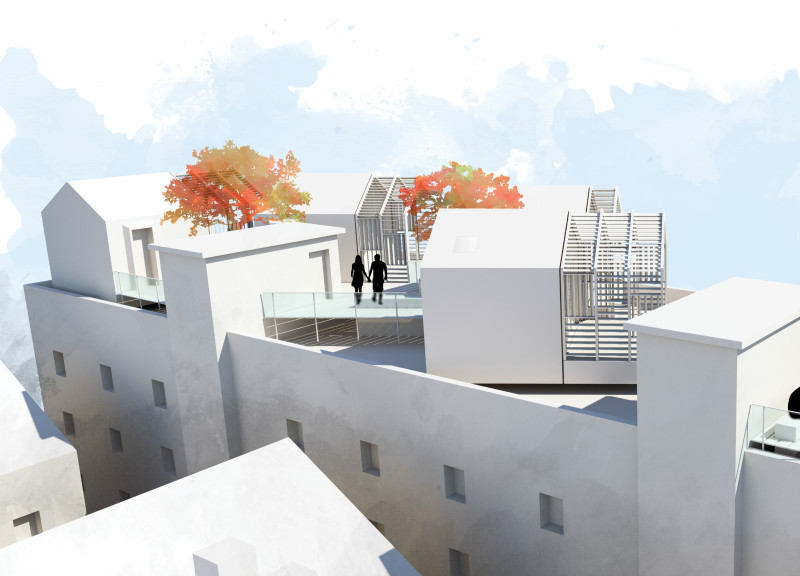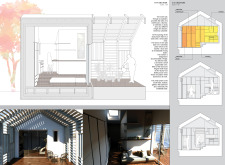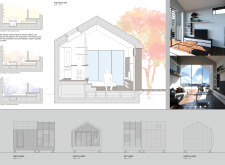5 key facts about this project
The function of MOSS extends beyond providing basic shelter. It serves as a community-centric living environment, aiming to foster social interaction while maintaining the individual privacy of its residents. The design encourages a harmonious blend of personal and communal spaces, allowing inhabitants to engage with both nature and their neighbors. This approach is crucial in modern urban landscapes, where social connectivity often falters amidst rapid development and density.
Key components of the MOSS project include its modular units, each designed to offer 25 square meters of flexible living space. This thoughtful design allows for various configurations to accommodate living, dining, and working areas, essential in optimizing the limited spatial resources in urban environments. The use of cross-laminated timber for the modular framework reflects a commitment to sustainability. This material is not only lightweight and strong but also facilitates a construction process that minimizes waste and promotes rapid assembly.
The integration of outdoor spaces is another hallmark of the MOSS project. Terraces and green roofs serve multiple purposes, including personal gardens, communal gathering areas, and environments for biodiversity. Such spaces provide essential connection to nature, enhancing the quality of life for residents and contributing to urban ecological health.
Lighting is a critical element in the design, with large windows strategically placed to invite natural light, creating a sense of openness and bringing warmth to the interiors. This attention to light significantly impacts the living experience, allowing inhabitants to feel more connected to their surroundings and reducing the reliance on artificial lighting.
In terms of thermal and acoustic performance, the MOSS project incorporates advanced insulation technologies, ensuring that each housing unit remains comfortable throughout the year. The design also emphasizes sustainability through energy efficiency technologies, such as photovoltaic panels and rainwater harvesting systems. These features are integrated seamlessly into the architecture, underlining a commitment to reducing energy consumption and promoting environmental awareness.
The overall layout of MOSS is characterized by fluid circulation, allowing for easy movement between spaces. This design strategy facilitates interaction among residents while respecting their need for personal space. It allows for different areas to be used according to time of day and activities, thereby maximizing the efficiency and functionality of the living spaces.
MOSS stands as a contemporary exploration of urban housing design that respects the existing urban fabric while responding to the evolving needs of city dwellers. Its unique modular design combined with sustainable material choices and innovative technologies makes it a compelling model for future urban development. The project embodies a holistic approach to architecture that prioritizes both community and individuality in complex urban environments. Readers interested in exploring the architectural plans, sections, designs, and ideas behind MOSS can delve deeper into the project presentation for an enhanced understanding of its innovative concepts and practices.


























